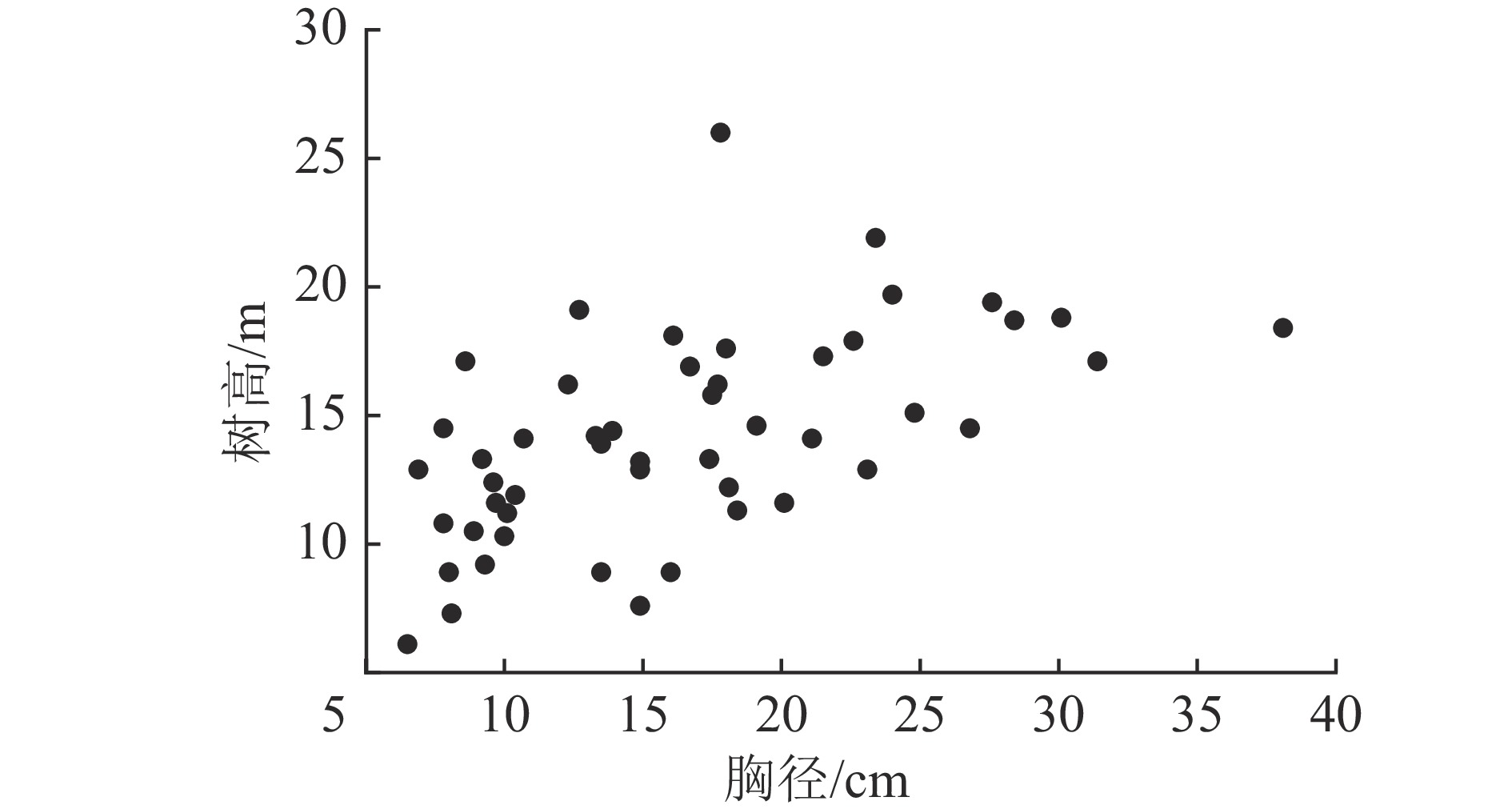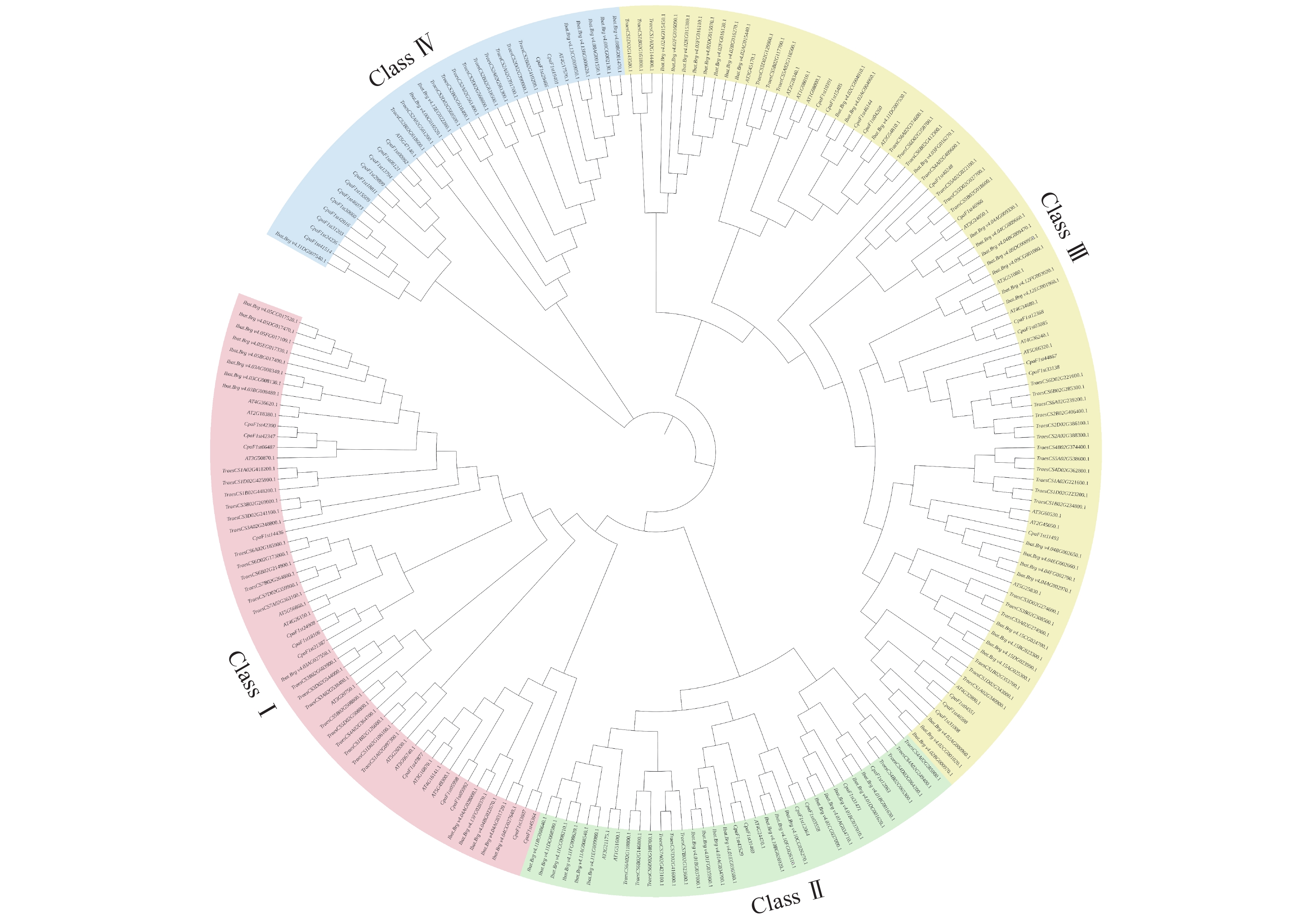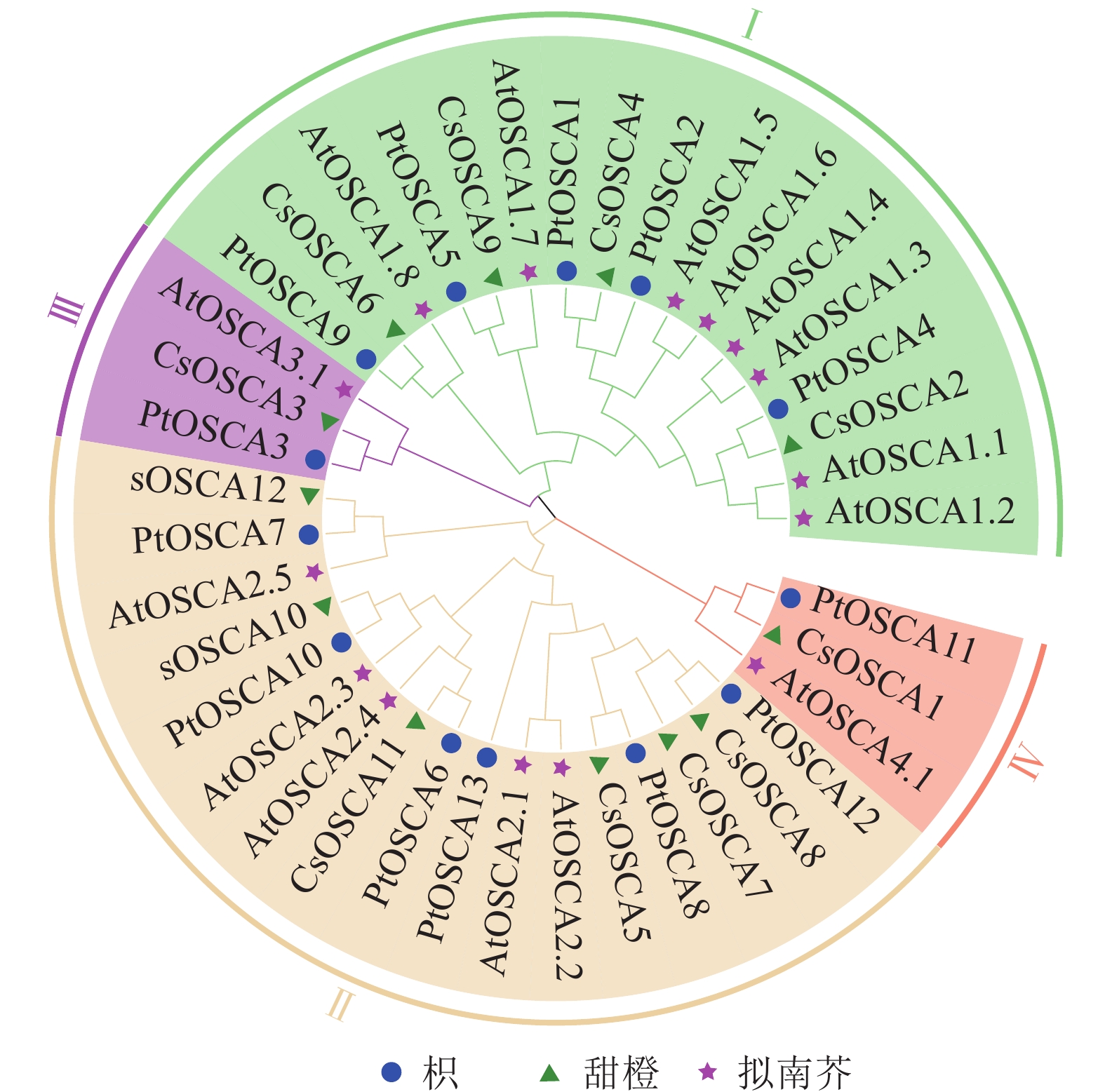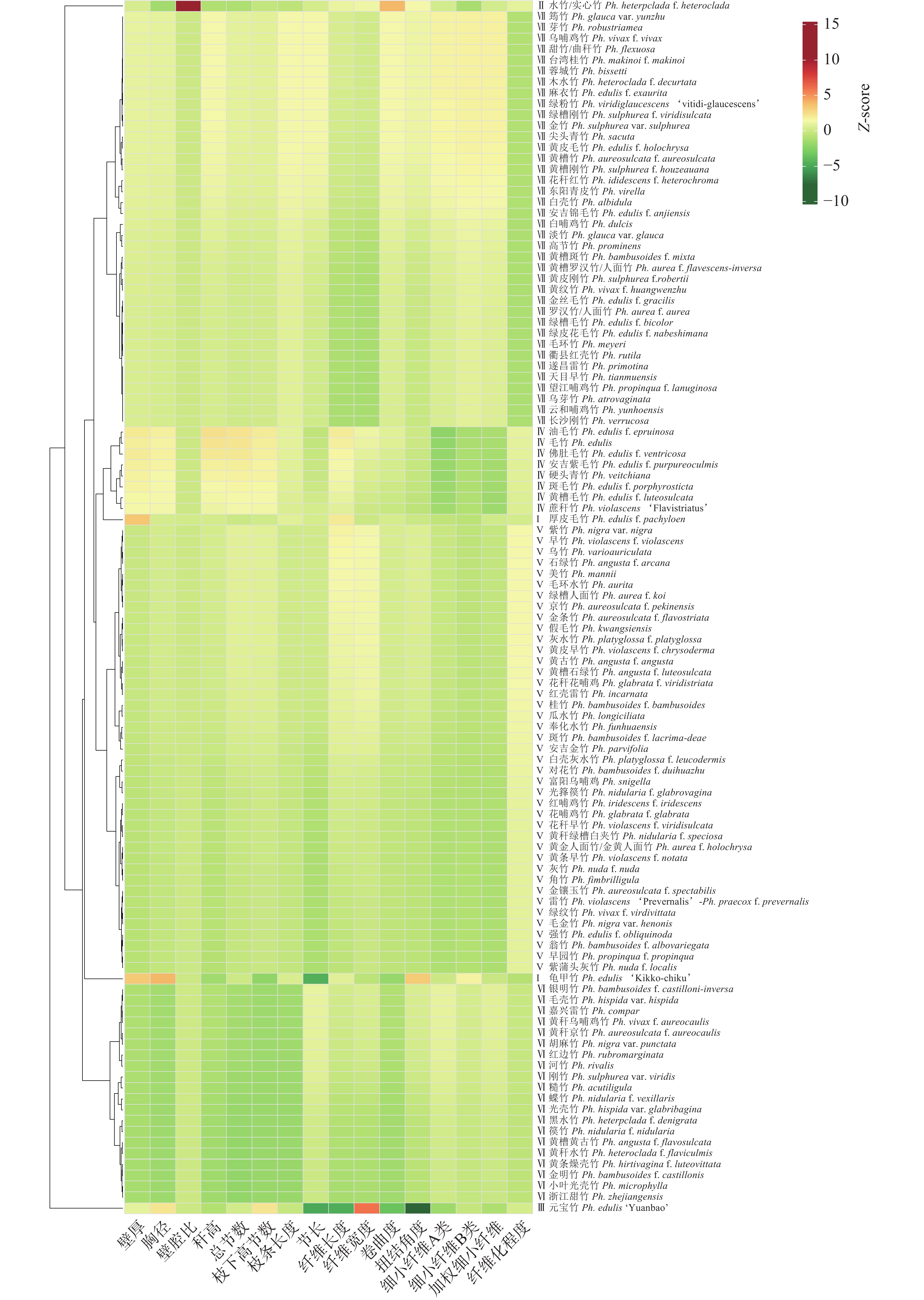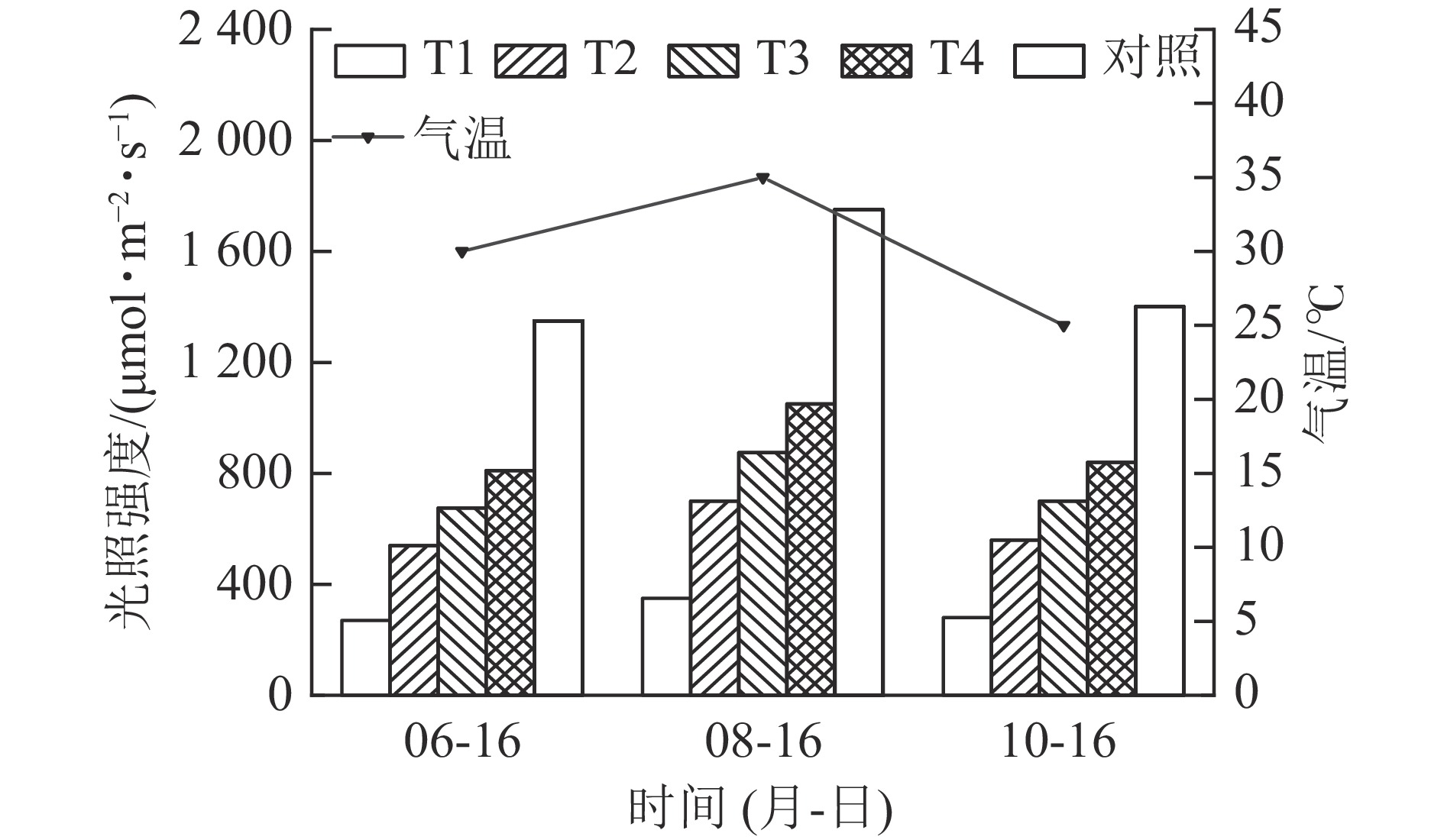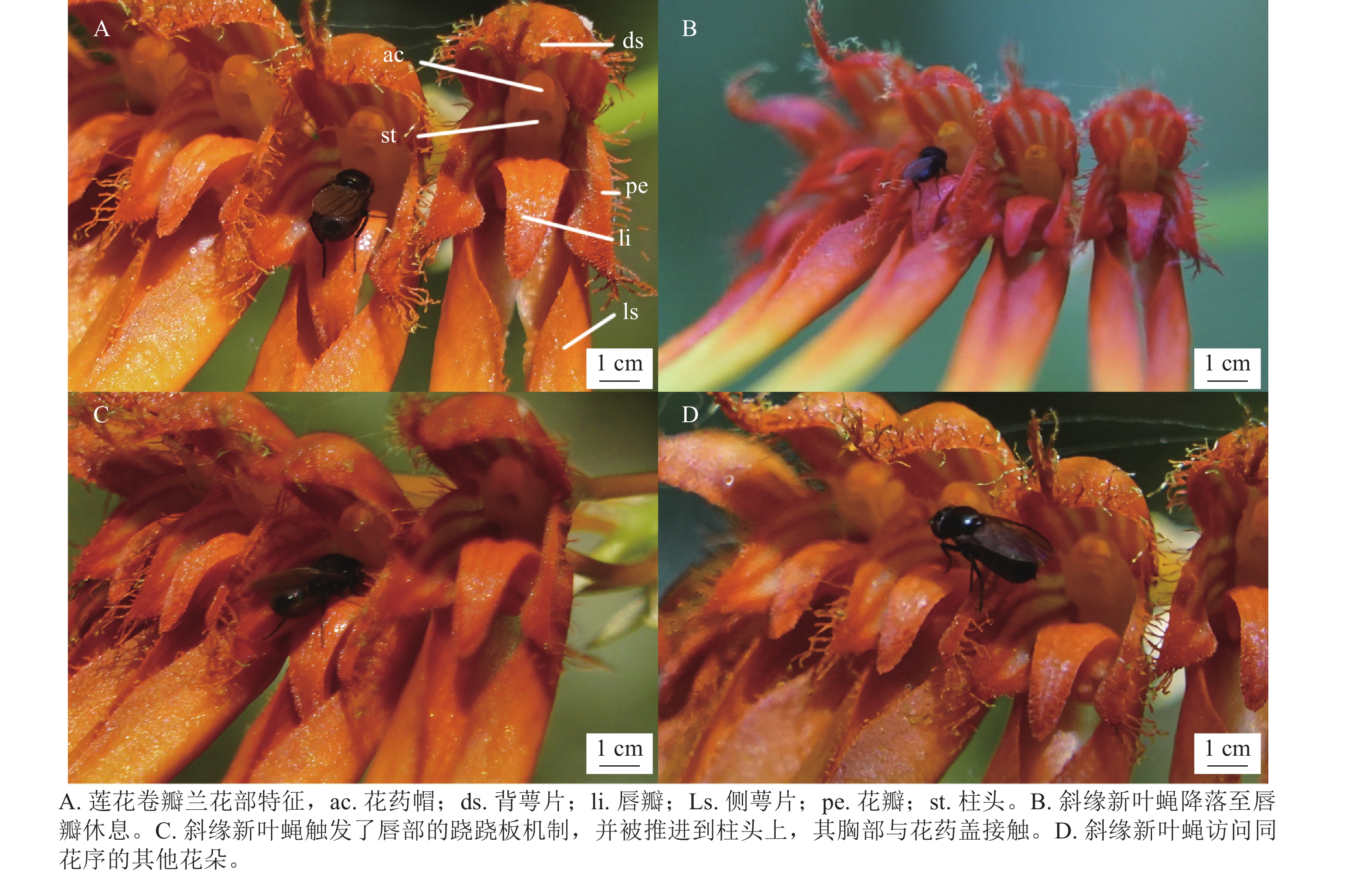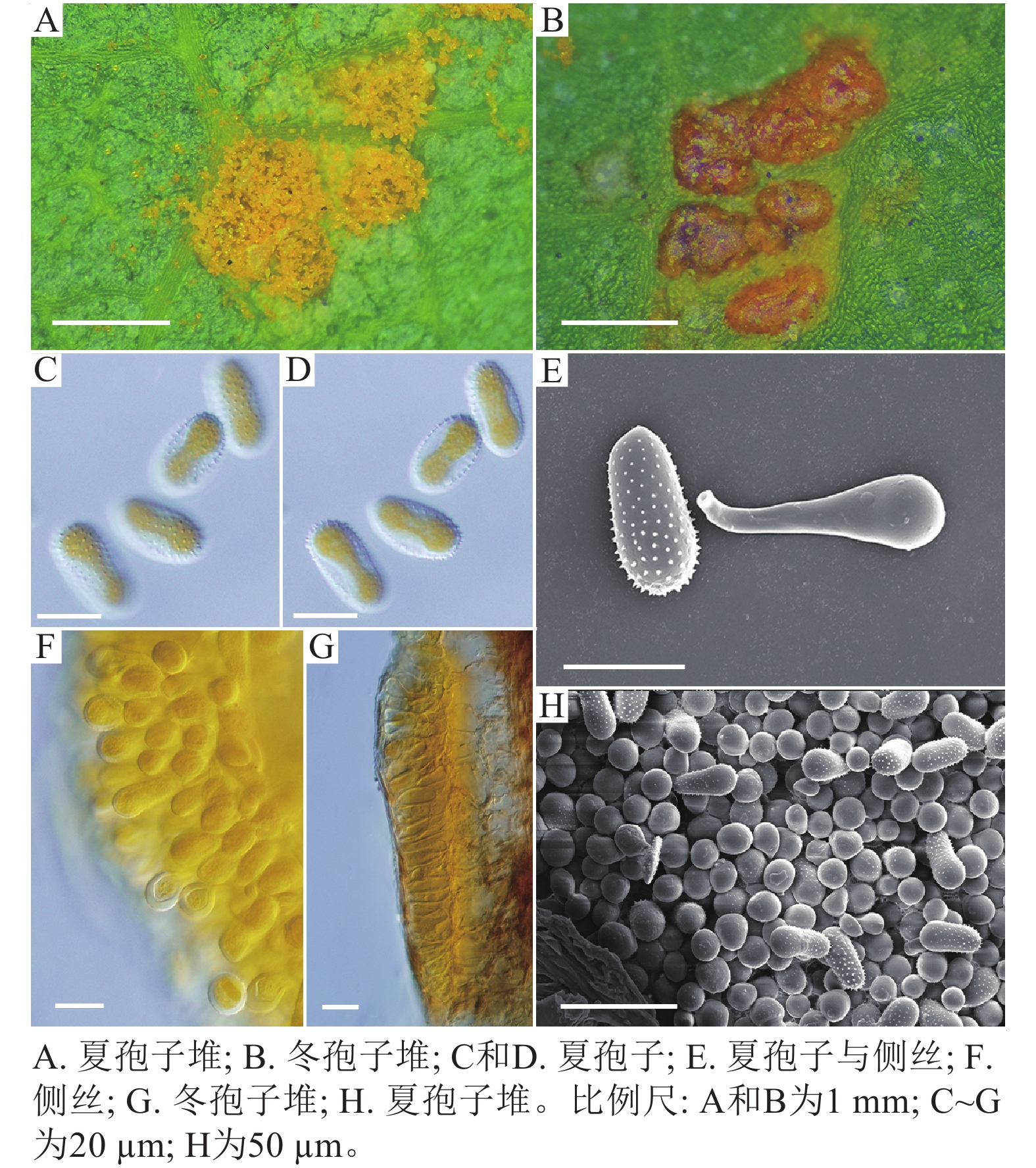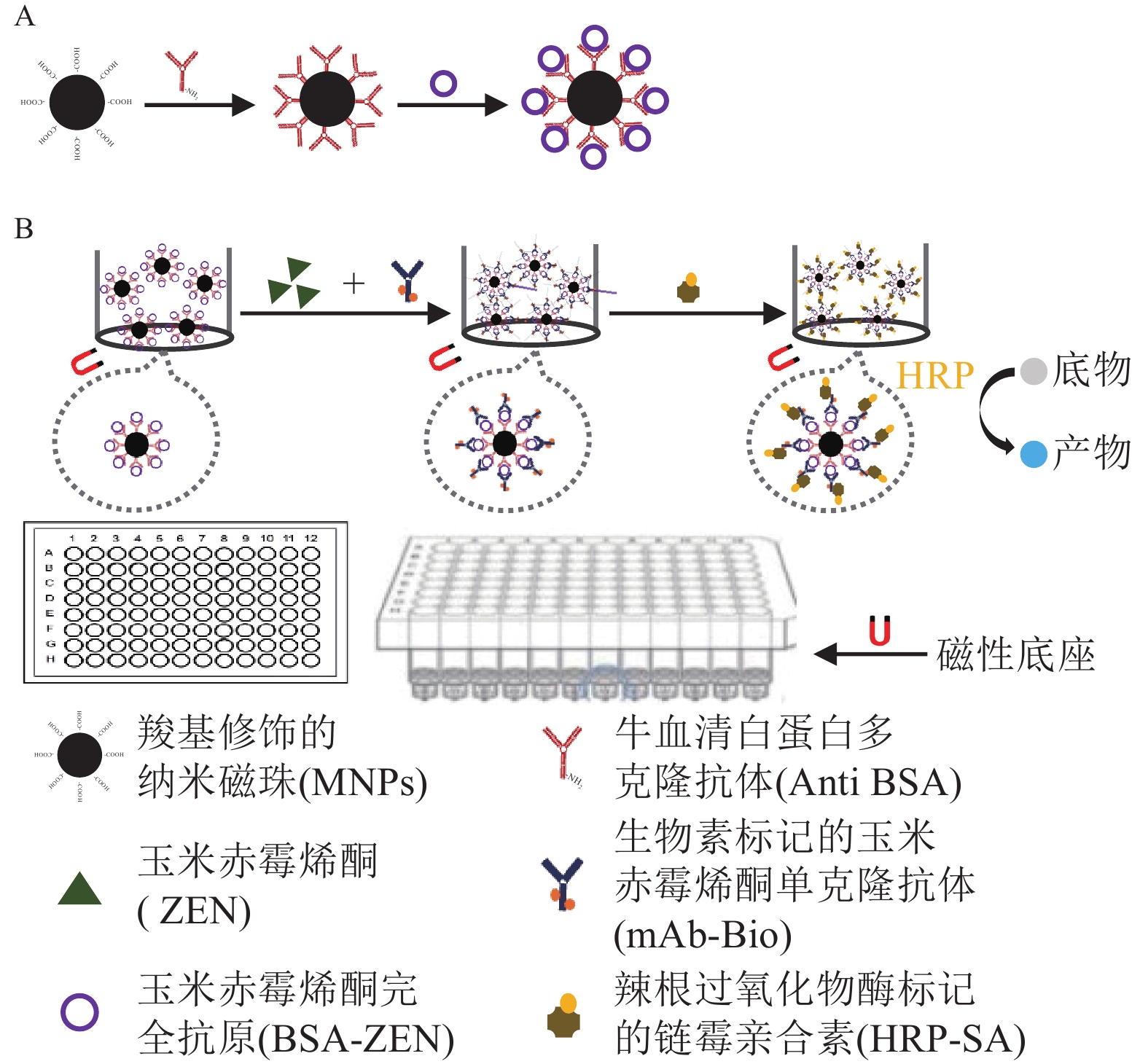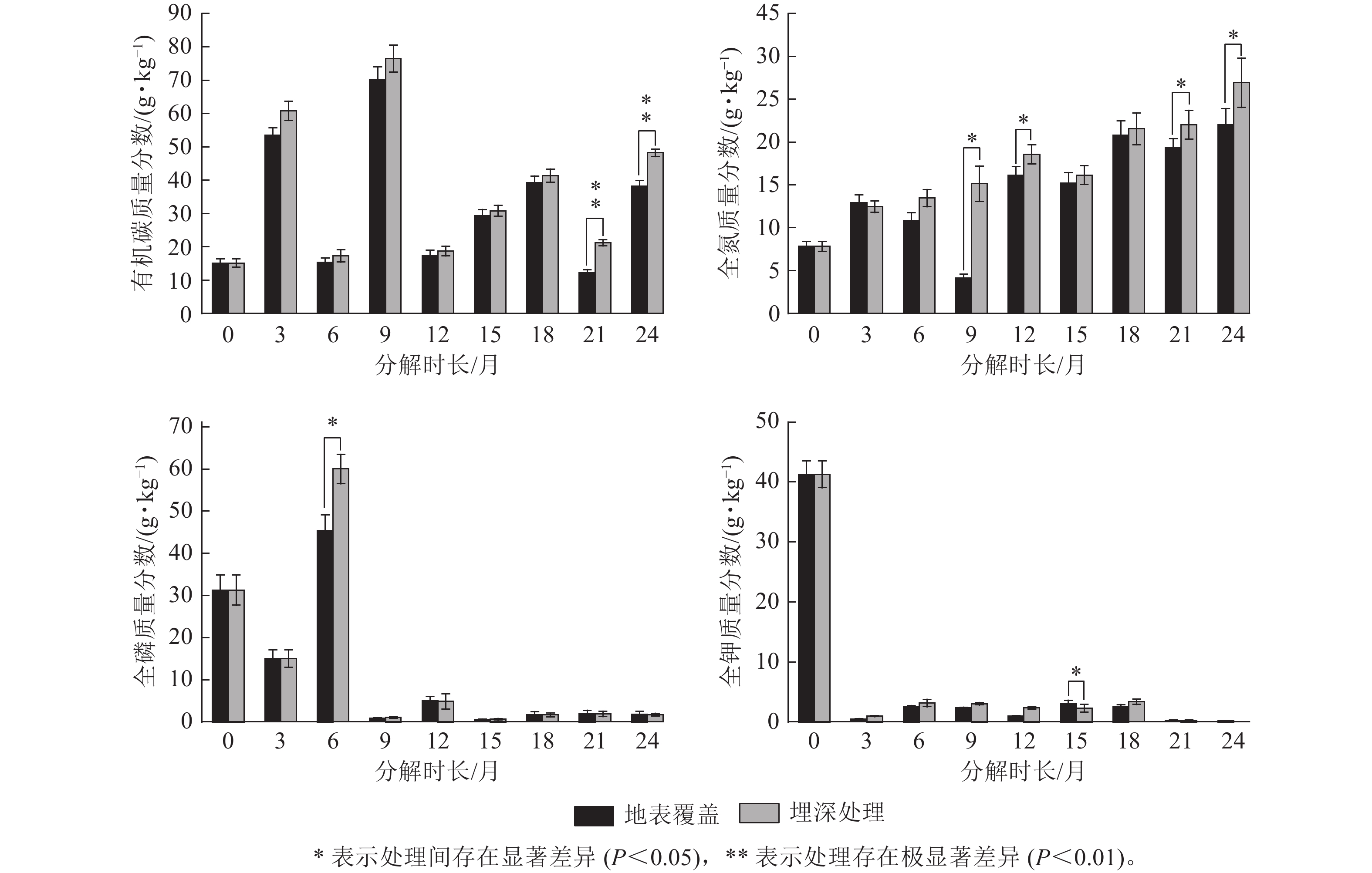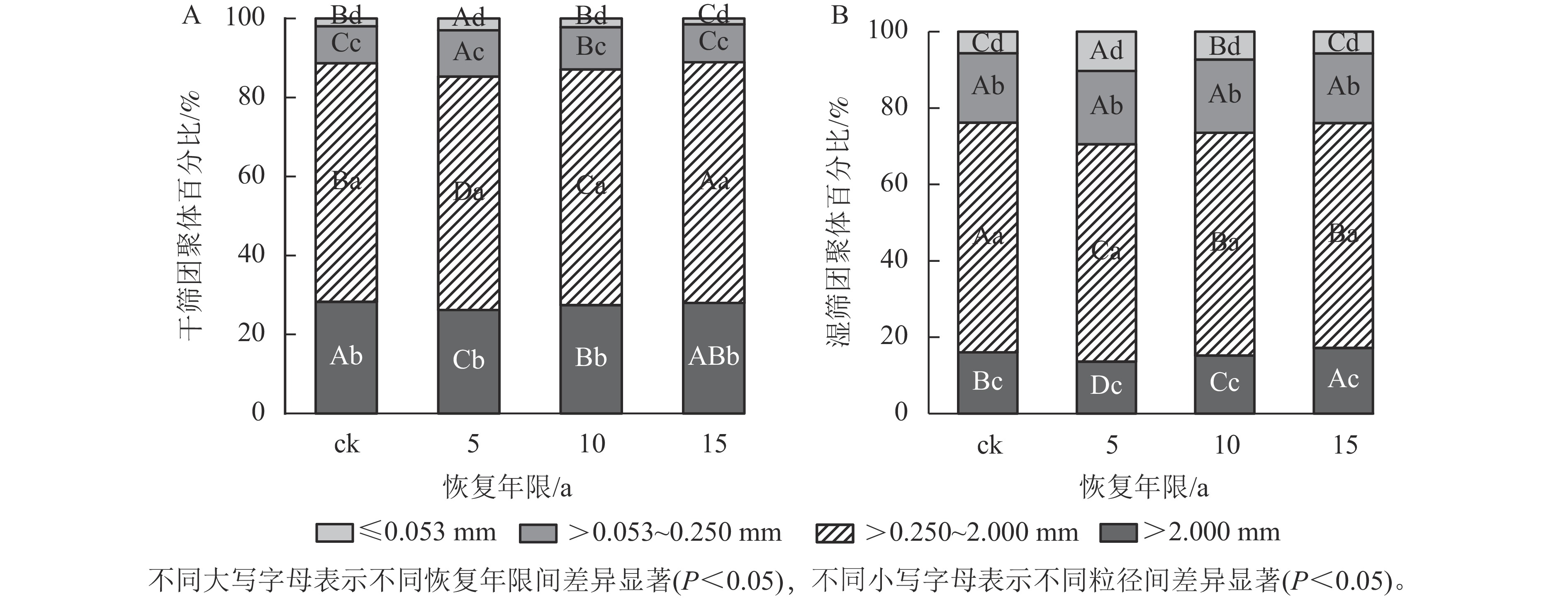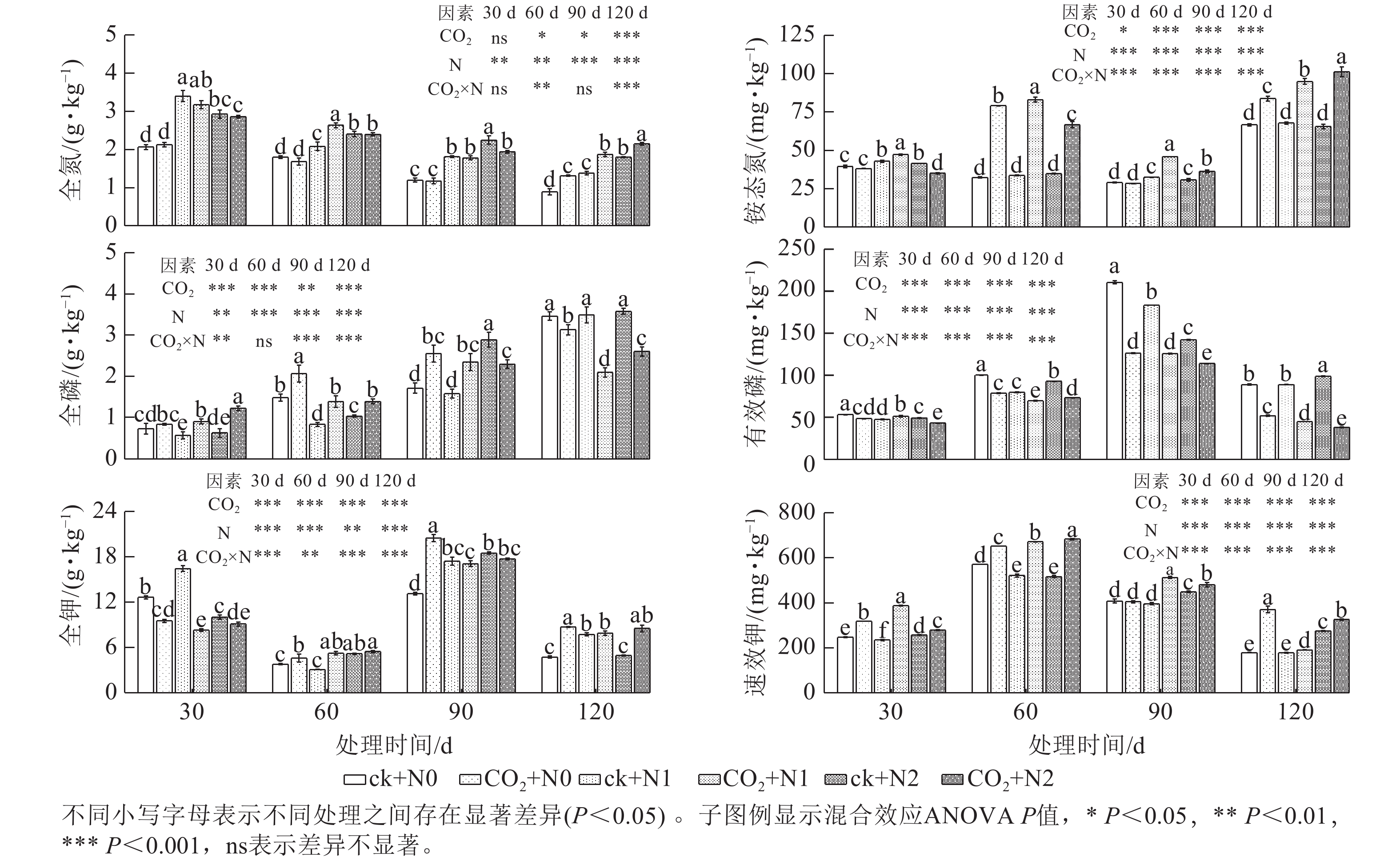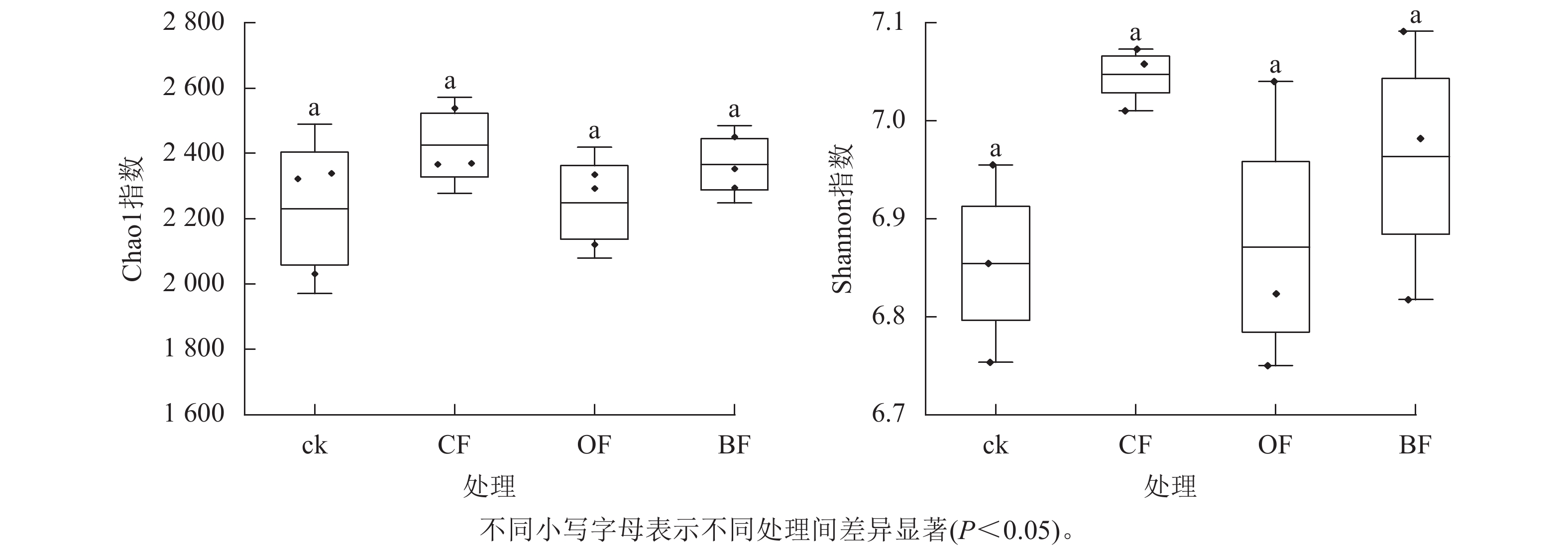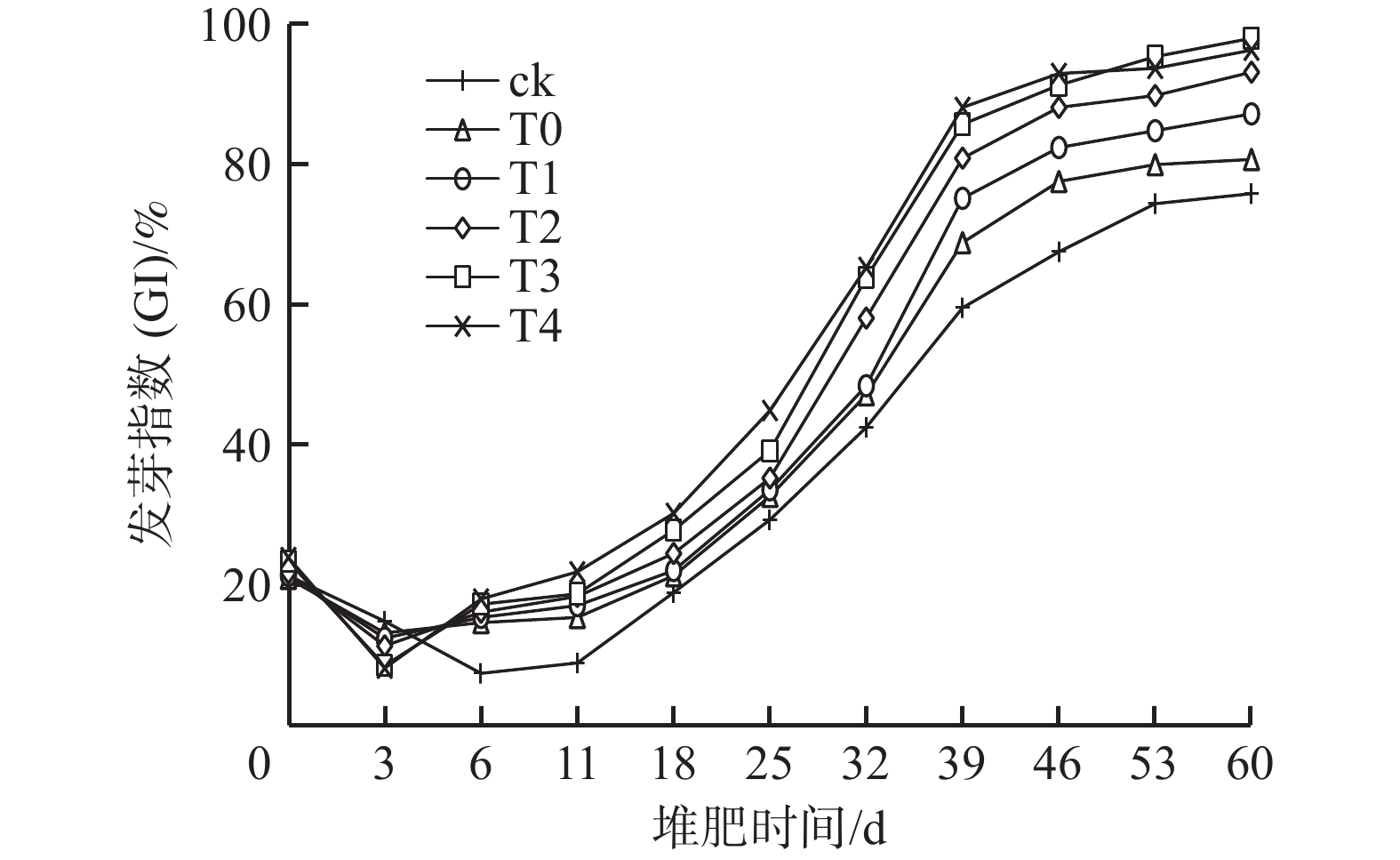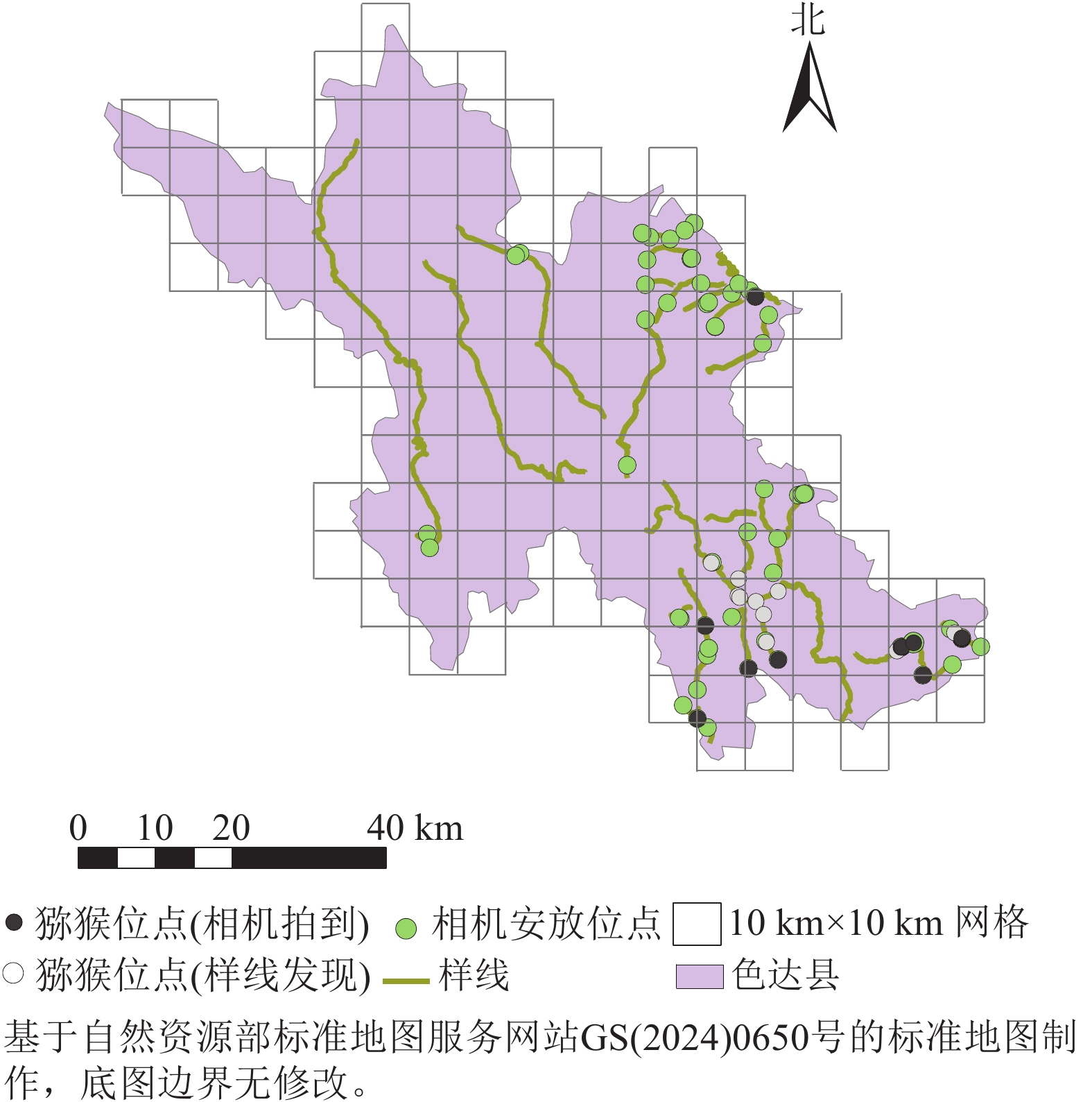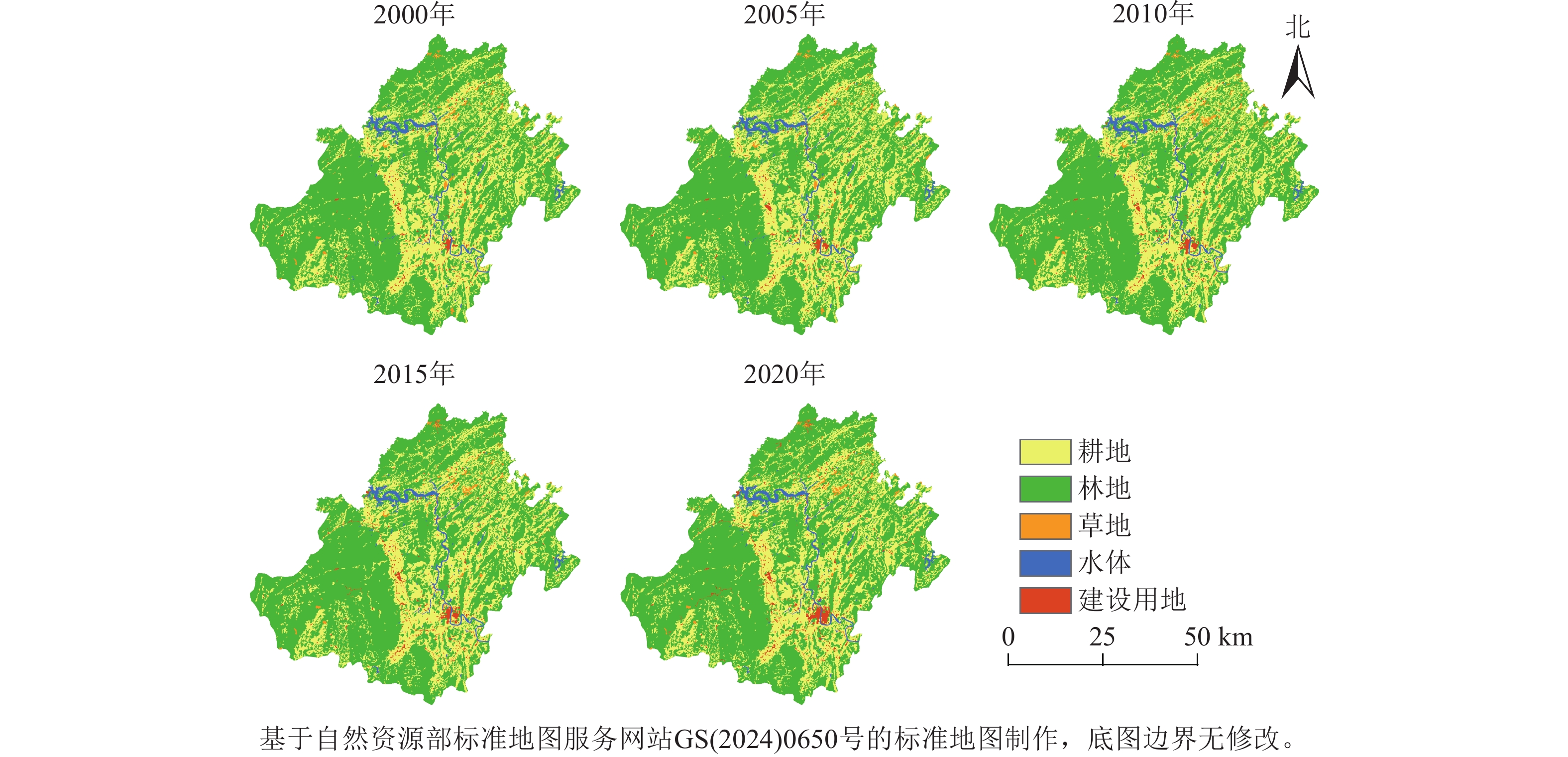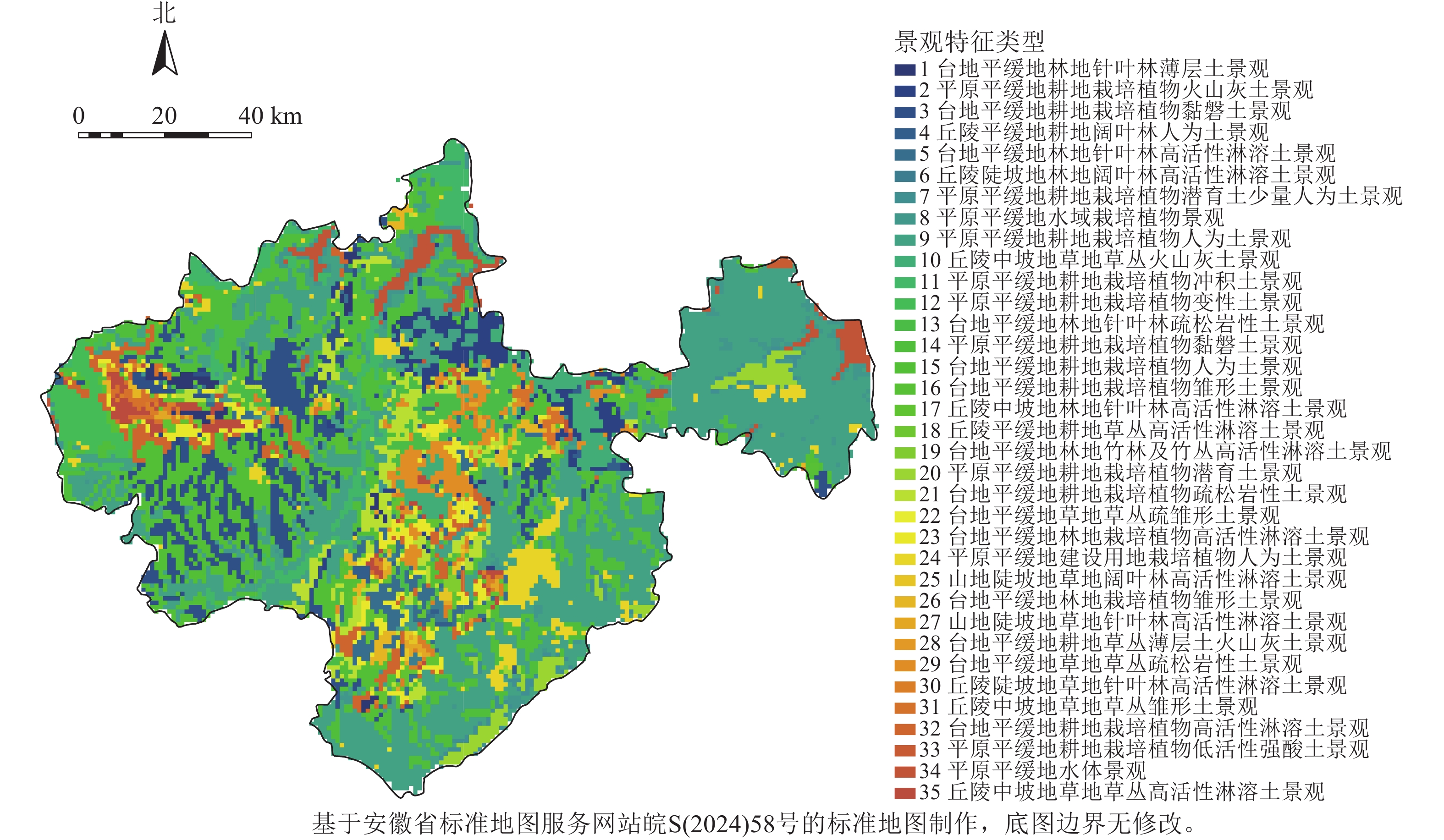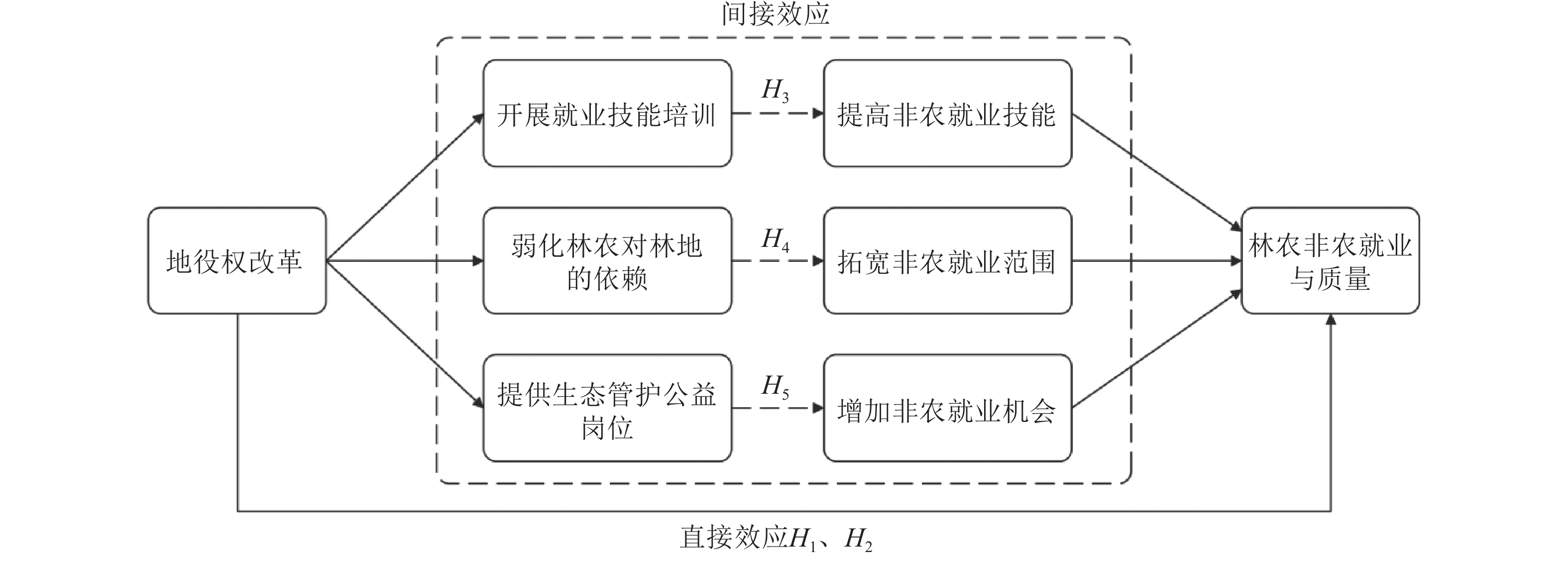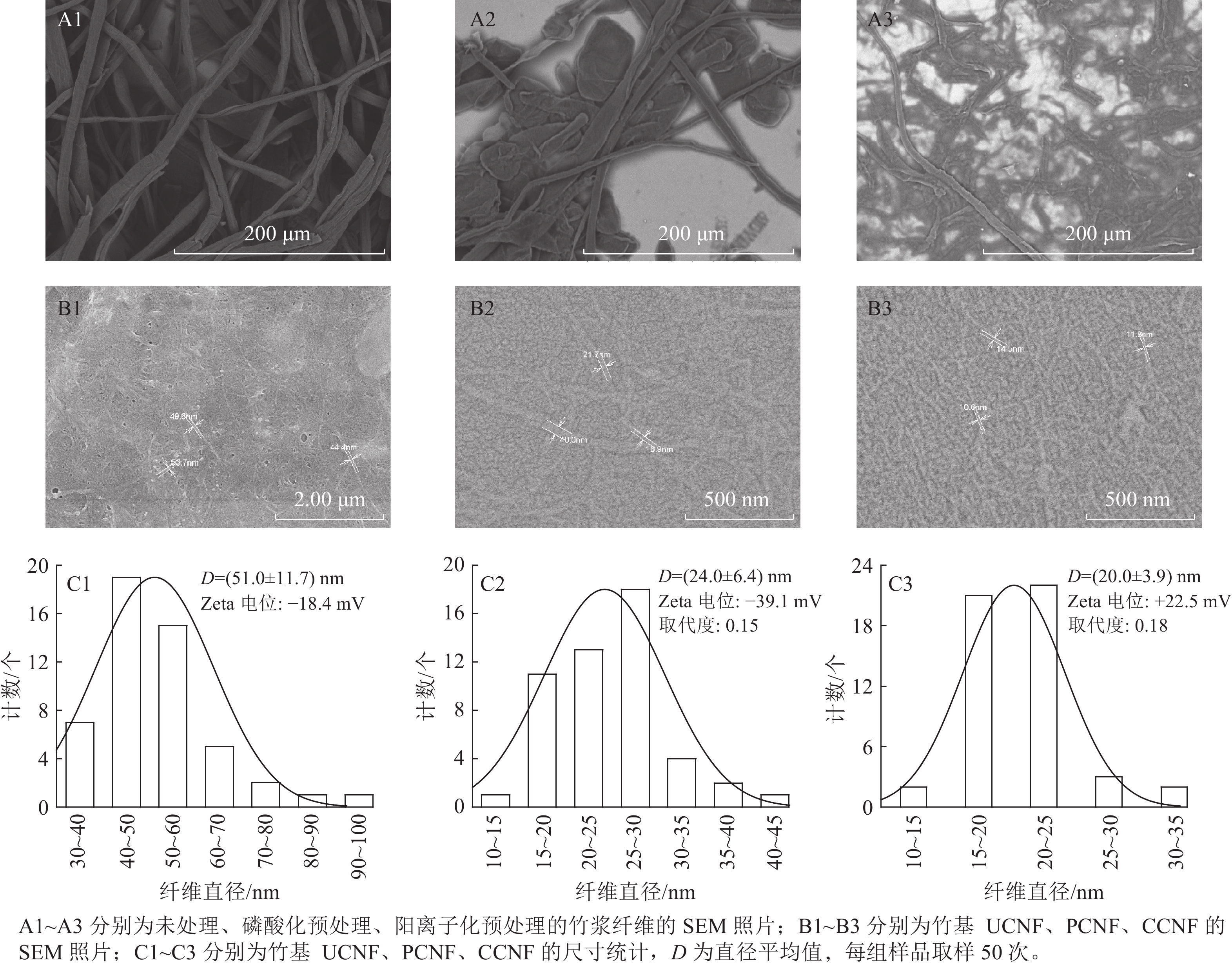Current Articles
2025, Volume 42, Issue 6
2025,
42(6):
1111-1121.
doi: 10.11833/j.issn.2095-0756.20250317
Abstract:
Objective With carbon sequestration benefits and economic benefits of Phyllostachys edulis timber forests as operational targets, this study aims to establish a collaborative optimization management plan to guide the scientific management of Ph. edulis forests, so as to realize the long-term maintenance of productivity and continuous economic output. Method Taking Ph. edulis timber forests in Anji County, Zhejiang Province as the research subject, a 3-year continuous survey was conducted on 30 field monitoring plots to obtain data on the diameter at breast height (DBH), age and stand density. A Weibull distribution equation was fitted to establish a growth and renewal model for Ph. edulis. Based on this, a multi-objective management model was constructed by integrating Ph. edulis timber carbon sequestration benefits with economic benefits. The changes in carbon storage and net present value (NPV) of Ph. edulis timber forests under different harvesting strategies (harvesting age, intensity, and method) were simulated. Through comparative analysis, the optimal multi-objective management plan was screened. Result For short operating period, the goal was to rapidly enhance economic benefits while maintaining carbon sink potential, which involved retaining 90% of Ⅰ-grade Ph. edulis, harvesting 40% and 60% for Ⅱ-grade and Ⅲ-grade Ph. edulis at large diameter stages. The optimal level could be achieved, with an aboveground carbon storage of 11.14 t·hm−2 and a cumulative NPV of 12 853.18 yuan·hm−2. During the intermediate operating period, the goal was to balance carbon sequestration benefits with economic returns by harvesting 30% of Ⅱ-grade Ph. edulis at small diameter stages and 30% of Ⅲ-grade Ph. edulis at large diameter stages. Under optimal conditions, the aboveground carbon storage would reach 11.21 t·hm−2, with a cumulative NPV of 14 363. 43 yuan· hm−2. For long-term operating period, the goal was to maximize carbon sequestration benefits while also considering economic returns, 40% of the Ⅱ-grade Ph. edulis harvested at the small diameter stage and 90% of Ⅲ-grade Ph. edulis harvested at the large diameter stage. Under optimal conditions, the aboveground carbon storage would reach 11.94 t·hm−2, with a cumulative NPV of 27 456.99 yuan·hm−2. Conclusion A multi-objective management model for Ph. edulis timber forests is constructed, and a harvesting and management strategy is proposed to achieve synergistic carbon sequestration and economic benefits. [Ch, 9 fig. 3 tab. 33 ref.]
2025,
42(6):
1122-1131.
doi: 10.11833/j.issn.2095-0756.20240512
Abstract:
Objective The objective is to study the 2 basic models for estimating forest biomass: constant allometric ratio (CAR) model and variable allometric ratio (VAR) model, and compare the prediction accuracy (P) of the models, so as to provide reliable theoretical and technical support for forest biomass monitoring. Method Based on the biomass survey data of 50 Larix gmelinii trees in 18 fixed sample plots of Pangu Forest Farm in Daxing’ an Mountains, a nonlinear seemingly uncorrelated regression method was used to construct the additive biomass models of CAR and VAR and to compare and evaluate the univariate and binary models of the 2 model forms. Result (1) In the univariate model, the total biomass of the CAR model and the adjusted coefficient of determination (\begin{document}$ {R}_{\mathrm{a}}^{2} $\end{document} \begin{document}$ {R}_{\mathrm{a}}^{2} $\end{document} Conclusion In both the univariate and binary models of total biomass and component biomass of trees, the CAR model has better fitting and model testing indexes than the VAR model, and the CAR model has better fitting and prediction effects on forest biomass. The fitting effect of small-diameter trees is better than that of large diameter trees. In general, the CAR model is not only simpler in form, but also performs better in fitting effect and estimation accuracy, which can provide a theoretical basis for estimating the biomass of L. gmelinii in Daxing’ an Mountains. [Ch, 5 fig. 5 tab. 31 ref.]
2025,
42(6):
1132-1141.
doi: 10.11833/j.issn.2095-0756.20250395
Abstract:
Objective Forest biomass is a cruial indicator of the productivity and carbon storage capacity of forest ecosystems. Studing its dynamic changes can facilitate a profound understanding of the functions of forest ecosystems and offer a scientific basis for ecological management and carbon cycle research. Method Taking Qujing City of Yunnan Province as the study area, a remote sensing estimation model of aboveground biomass was constructed using data from one type of continuous clearing sample plots in every 5-year period from 1992 to 2017, in combination with DEM and Landsat 5 TM, Landsat 8 OLI images. For the main conifer species (Pinus yunnanensis, P. armandii and mixed conifer forests), five machine learning methods, namely GBRT, RF, XGBoost, PLS and CatBoost, were compared to systematically evaluate their fitting performance and estimation accuracy. The optimal model was selected through the comprehensive evaluation of R2, RMSE, rRMSE and MAE indicators, and used for the time series estimation of aboveground biomass of major coniferous forests in Qujing City from 1992 to 2022. Result The estimation performance of different models on the three dominant coniferous species varied: CatBoost model performed best in mixed coniferous forests (R2=0.90, RMSE=5.66), with strong nonlinear fitting ability; while GBRT model performed better in P. yunnanensis forests and P. armandii forests, with stronger estimation stability and explanatory power. Conclusion This study indicates that the performance of different machine learning models in forest aboveground biomass estimation varies according to tree species. Model selection should consider the growth characteristics of tree species and their response differences to remote sensing factors, and avoid uniform modelling strategies to improve the estimation accuracy and applicability. [Ch, 3 fig. 39 ref.]
2025,
42(6):
1142-1153.
doi: 10.11833/j.issn.2095-0756.20250263
Abstract:
Objective This study aims to investigate the regulatory function of GATA transcription factors in Cyclocarya paliurus under salt stress. Method Based on the genomic and transcriptomic data of C. paliurus, members of the GATA gene family were identified, and their physicochemical properties, gene structure, and phylogenetic evolution were comprehensively analyzed. The expression patterns of CpGATAs in response to salt stress were investigated through salt stress treatments with 4 sodium chloride concentrations (0, 25.7, 51.3 and 77.0 mmol·L−1). Result The 46 GATA members were identified from the genome, distributed on 14 chromosomes. The encoded protein had a length of 132−827 amino acids, a molecular weight of 14358.49 −92724.86 Da, and a hydrophilicity coefficient of −1.119 − −0.368. Subcellular localization showed that 37 GATA genes were located in the nucleus, while the remaining 9 genes were distributed in chloroplasts, cytoplasm, and plasma membrane. The analysis and prediction of promoter cis acting elements indicated that GATA gene family members included 13 cis-acting promoter elements, including auxin responsive element, gibberellin responsive element and low-temperature responsive element. Transcriptome analysis showed that the expression levels of 12 genes, including CpaF1st31008, CpaF1st45364, and CpaF1st12063, were higher at 30 days of salt treatment than at 15 days, and were upregulated under salt stress. However, 18 genes, including CpaF1st13794 and CpaF1st04260, were downregulated under salt stress. Conclusion Members of the GATA gene family in C. paliurus actively participate in salt stress response at the transcriptional level and exhibit diverse response patterns. [Ch, 8 fig. 2 tab. 31 ref.]
2025,
42(6):
1154-1164.
doi: 10.11833/j.issn.2095-0756.20250103
Abstract:
Objective This study aims to reveal the structural characteristics of the OSCA gene family in Poncirus trifoliata and its expression profile under drought stress, providing a reference for PtOSCA gene functional analysis and drought resistance research. Method Bioinformatic methods were used to identify and comprehensively analyze PtOSCA gene family members across the whole genome. RT-qPCR was used to analyze the dynamic expression profiles of PtOSCA genes under PEG treatment. Result Thirteen PtOSCAs were identified in the P. trifoliata genome and named PtOSCA1−PtOSCA13 according to their homology with Arabidopsis thaliana OSCA genes. Chromosomal localization analysis indicated that these genes were unevenly distributed across 7 out of the 18 chromosomes in P. trifoliata. Phylogenetic analysis showed that PtOSCAs were divided into four groups, with 5, 6, 1, and 1 family members respectively. Analysis of protein physicochemical properties and conserved domains revealed that there were differences in protein length and molecular weight among PtOSCAs, while the motifs were relatively conserved, with all PtOSCAs proteins containing Motif 1 and Motif 3. Cis-acting element analysis indicated that the promoter regions of PtOSCAs had numerous cis-elements responsive to drought, abscisic acid, anaerobic induction, and low-temperature stress. Gene expression analysis demonstrated that PtOSCAs had tissue-specific expression and responses to drought stress. Under drought stress, the expression levels of PtOSCA family members changed to varying degrees in both leaves and roots. In leaves, 11 PtOSCAs were induced by drought stress,and in roots, 10 PtOSCAs were upregulated, with PtOSCA4 upregulated 3.76-fold in leaves and 36.74-fold in roots after drought stress induction. Conclusion The PtOSCA gene family shows evolutionary conservation and shares a close phylogenetic relationship with the OSCA genes of A.thaliana and Citrus sinensis. Functional differentiation exists within the PtOSCA gene family, and PtOSCA4 may play a key role in drought stress response of P. trifoliata. The results of this study provide an important basis for research on the molecular functions of PtOSCAs under drought stress in P. trifoliata. [Ch, 6 fig. 2 tab. 27 ref.]
2025,
42(6):
1165-1173.
doi: 10.11833/j.issn.2095-0756.20240606
Abstract:
Objective This study aims to investigate the difference and correlation between phenotypic traits and fiber traits in Phyllostachys, and establish fitting equations to characterize these traits, so as to explore the phenotypic variation of Phyllostachys species and establish a research paradigm for bamboo phenotypic characteristics. Method Taking 111 species (including intraspecific taxa) of Phyllostachys in China Bamboo Expo Park in Anji, Zhejiang Province as the research objects, variation analysis, correlation analysis, and cluster analysis on 8 phenotypic traits and 8 fiber traits were conducted, and fitting equations among these traits were established. Result There were significant inter-species differences in 8 phenotypic traits and 8 fiber traits in Phyllostachys. The coefficients of phenotypic trait variation ranged from 21.75% to 67.72%, among which diameter at breast height (DBH), wall thickness, number of high nodes under branches, and stem height belonged to height variation. Ph. edulis had the highest number of intraspecific ranks, totaling 17. Its phenotypic traits, including wall-to-cavity ratio, height, and node length showed a higher degree of variation than those of the sub species level within the entire genus. There were 39 pairs of significant correlations between 8 phenotypic traits and 8 fiber traits. Among the phenotypic traits of Phyllostachys, wall thickness had a higher correlation with DBH, and stem height had a higher correlation with total number of nodes. There was a highly significant correlation between DBH and the other 7 phenotypic traits. Among the fiber traits, the correlation between fine fiber type A and weighted fine fiber was the strongest. 111 species of the genus Phyllostachys were classified into 7 major categories. CategoryⅠwas characterized by significantly thicker walls than other bamboo species. Category Ⅱ was characterized by a higher ratio of wall to cavity. Category Ⅲ was characterized by shorter nodes. Category Ⅳ was characterized by larger DBH, stem height, and branch lengths. CategoryⅤshowed that all phenotypic indicators were slightly lower than the average value of the genus. Category Ⅵ was characterized by significantly lower wall thickness, stem height, total number of nodes, number of high nodes under branches, and node length. Category Ⅶ showed that all phenotypic indicators were slightly higher than the genus average. Fitting equations were established for the phenotypic traits of wall thickness (y1), stem height (y3) and total number of nodes (y4), with DBH (x) as the independent variable. The equations were y1= 0.227 7x-0.001 2x2, y3= 0.232 1x-0.001 0x2, and y4= 1.621 2x-0.012 0x2, respectively. The determination coefficients (R2) were relatively large and all reached an extremely significant level (P<0.01), which could effectively predict phenotypic traits. Conclusion The degree of variation of fiber traits of Phyllostachys is lower than that of phenotypic traits, indicating that the genetic stability of fiber traits is higher than that of phenotypic traits. The higher variation in subspecies, forms, and cultivated varieties of Ph. edulis and Ph. heteroclada indicates that there is great potential for breeding. There is a strong correlation between phenotypes in the genus Phyllostachys, and an increase in DBH will also lead to an increase in other phenotypic traits. [Ch, 1 fig. 3 tab. 25 ref.]
2025,
42(6):
1174-1183.
doi: 10.11833/j.issn.2095-0756.20240625
Abstract:
Objective The objective is to explore the photosynthetic response mechanism of Clematis henryi to different light intensities, and to provide support for the introduction , cultivation and garden application of C. henryi. Method From March to October 2022, 3-year-old C. henryi cuttings were used as experimental materials, and 5 light treatments, including 82% (T1), 61% (T2), 53% (T3), 43% (T4), and 0% (full light, the control) shading, were set up to study the effects of different shading degrees on the growth and photosynthetic characteristics of C. henryi. Result T1 and T2 treatments helped maintain dark green leaf color of C. henryi in summer and promoted the increase in leaf area, internode spacing, leaf dry mass, and water content (mean values of the two treatments being 2.17, 1.43, 6.60, and 1.51 times those of the control, respectively). These treatments facilitated the expansion of leaf spongy tissue (with an average of 1.28 times that of the control) while inhibiting palisade tissue growth (with an average of 0.76 times that of the control). The leaves of plants treated with shading below 61% (T2) turned yellow and wrinkled. The shading treatments stimulated increases in leaf area, internode distance, leaf dry weight, and water content, which were 1.49, 1.31, 3.47, and 1.20 times those of the control, respectively. They also promoted spongy tissue expansion (1.12 times the control) while suppressing palisade tissue growth (0.86 times the control). From June to August, with the continuous increase of light intensity and temperature, the diurnal variations in net photosynthetic rate (Pn), stomatal conductance (Gs), and transpiration rate (Tr) of plants treated by T1, T2, and T3- changed from a single-peak to a double-peak curve. The leaves protected their photosynthetic systems through photosynthetic midday depression. Concurrently, by lowering the light compensation point (PLC) (81.72% of the control) and dark respiration rate (RD) (67.70% of the control), the plants adapted to low-light environments and enhanced light energy utilization. By stabilizing the initial fluorescence (Fo), electron transport rate (RET), and non-photochemical quenching coefficient (QNP), the photochemical efficiency of PSⅡ was maintained. Meanwhile, the photosynthetic systems of T4 and plants of the control group were subjected to excessive stress from strong light and high temperature, resulting in irregular variations in photosynthetic and chlorophyll fluorescence parameters. In October, growth, photosynthetic and chlorophyll fluorescence parameters of plants treated by T1, T2 and T3 recovered faster than those by T4. Conclusion C. henryi has strong shade tolerance, and shading treatment can promote the growth of branches and leaves. In summer cultivation, a shading environment of 61% to 82% should be set up to avoid irreversible damage to the photosynthetic system caused by high temperature and strong light, and ensure the healthy growth of plants. The shade tolerance of C. henryi will effectively expand its scope of garden applications, providing more choices for plant landscape construction in understory, north balcony, and indoor space. [Ch, 2 fig. 4 tab. 32 ref.]
2025,
42(6):
1184-1191.
doi: 10.11833/j.issn.2095-0756.20250150
Abstract:
Objective This study investigated the breeding system and pollination biology of Bulbophyllum hirundinis to clarify its pollination characteristics and endangerment mechanisms, thereby providing a scientific basis for its conservation. Method Field investigations were conducted to study the flowering phenology, floral morphology, breeding system, and pollinating insects of B. hirundinis. The breeding system and pollination biology characteristics were analyzed, and reproductive success within its natural range was quantified. Result (1) The full-bloom stage of B. hirundinis was in the middle of May. The flowering period of a single flower was approximately 10 days, and the flowering period of the population was about 30 days. It had the characteristic of concentrated blooming (60% of the flowers bloom within 15 days). (2) The inflorescence was umbellate, composed of 3−6 yellow flowers. (3) B. hirundinis was self-incompatible. The fruit-setting rate of artificial cross-pollination was 60.00%, and the natural fruit-setting rate was 21.22%. (4) 6 species of flower-visiting insects of B. hirundinis were observed, and it was confirmed that Neophyllomyza leanderi was the effective pollinator of B. hirundinis. Conclusion The flowering phenology of B. hirundinis was clarified for the first time, and the characteristic of concentrated blooming was discovered. It was confirmed that N. leanderi is the effective pollinator of B. hirundinis. [Ch, 2 fig. 3 tab. 42 ref.]
2025,
42(6):
1192-1200.
doi: 10.11833/j.issn.2095-0756.20250118
Abstract:
Objective Poplar leaf rust diseases, caused by fungi of the genus Melampsora, are one of the most widespread and hamful foliar diseases affecting poplar trees. This study aims to elucidate the occurrence of poplar leaf rust disease and the species diversity of its pathogens at the National Poplar Germplasm Resources Base in Liaoning Province, China. Method In October 2024, the 39 samples of poplar leaf rust disease were collected from the National Poplar Germplasm Resources Base in Liaoning Province and Liaoning Provincial Institute of Poplar, China. The morphological characteristics of urediniospores and teliospores of poplar leaf rust disease from the 2 locations were observed using an optical microscope and scanning electron microscope. Meanwhile, the genomic DNA of the pathogen was extracted, and the phylogenetic tree was constructed by rDNA ITS and 28S sequencing analysis. The pathogens were identified through a combination of morphological and molecular phylogenetic analyses. Result The results indicated that 36 samples were identified as M. laricis-populina, 2 samples were M. medusae, and 1 sample was M. populnea. M. medusae, a significant quarantine species in China, was detected for the first time in Northeastern China. Conclusion The 3 species of Melampsora were discoveried in Liaoning. This study also represents the first detection of the exotic quarantine pathogen M. medusae in Northeastern China. [Ch, 6 fig. 2 tab. 38 ref.]
2025,
42(6):
1201-1209.
doi: 10.11833/j.issn.2095-0756.20250120
Abstract:
Objective Zearalenone (ZEN), an estrogenic mycotoxin produced by Fusarium species, can widely contaminate cereal crops such as Zea mays, Glycine max, and Triticum aestivum, and is commonly found in cereal foods and feed. Due to its chronic, immunological, and reproductive effects, ZEN poses significant health risks. It will be of great significance to establish a highly sensitive ZEN detection method for exposure assessment and risk prevention and control. Method Based on the biotin-streptavidin amplification system, a highly sensitive enzyme-linked immunosorbent assay (MNPs-ELISA) for ZEN detection was developed by preparing ZEN complete antigen-conjugated magnetic nanoparticles (MNPs) and biotin-labeled ZEN monoclonal antibodies. Result The established MNPs-ELISA achieved a detection limit of 0.05 ng·mL−1 for ZEN (10% inhibitory concentration, IC10), a quantitative detection range of 0.08−1.04 ng·mL−1 (20%−80% inhibitory concentration range, IC20−IC80) and 50% inhibitory concentration of 0.29 ng·mL−1 (IC50), and there was almost no cross-reactivity with other common mycotoxins. Spike-recovery tests revealed high accuracy and stability. The quantitative detection results of ZEN in natural contaminated samples demonstrated that this method had good consistency with both commercial ELISA kits and liquid chromatography-tandem mass spectrometry (LC-MS/MS). Conclusion The established MNPs-ELISA method can meet the requirements for rapid quantitative detection of ZEN in cereal and feed samples, suitable for screening ZEN samples by grassroots inspection institutions and agricultural product processing enterprises, with good application prospects. [Ch, 7 fig. 4 tab. 26 ref.]
2025,
42(6):
1210-1220.
doi: 10.11833/j.issn.2095-0756.20250108
Abstract:
Objective The objective is to study the decomposition, nutrient release of Carya illinoensis green husk at different returning depths, and its effects on soil metabolites, so as to provide scientific reference for its full and rational utilization. Method A flat test plot was selected in Chunhui Mountain, Central South University of Forestry and Technology. The green husk of C. illinoensis ‘Jinhua’ was used as the test material. 3 treatments were set up: control (no return of green husk to the field), ground cover and buried depth (10 cm). The decomposition characteristics of green husk at different returning depths were studied for 2 years by nylon net bag method. The quality and nutrient quality of the remaining green husk in the decomposition bag, as well as physical and chemical properties of soil and metabolites were measured and analyzed every 3 months. Result (1) During the 2-year decomposition period, the decomposition rate of green husk from C. illinoensis under buried depth treatment was faster than that under ground cover. Under both treatments, the total organic carbon and phosphorus exhibited an enrichment and leaching pattern. Nitrogen showed an enrichment mode, while potassium showed a net release mode. (2) During the 2-year decomposition period, soil total nitrogen content under control treatment was higher than that under ground cover and buried depth treatments. The content of alkali-hydrolyzable nitrogen and available potassium in soil under buried depth treatment was higher than that under ground cover. The number of bacteria in soil under ground cover was greater than that under buried depth treatment, while the number of fungi and actinomycetes in soil under ground cover was lower than that under buried depth treatment. (3) The differences in soil metabolites between ground cover and buried depth treatments during the same period were small, while there were significant differences at different decomposition stages. When soil samples from the 12th month of green husk decomposition were compared with those from the 9th month, and soil samples from the 18th month were compared with those from the 12th month, 54 differential metabolites were identified in both comparisons, mainly concentrated in 22 metabolic pathways, including pyrimidine metabolism, ubiquinone and other terpenoid-quinone biosynthesis, steroid hormone biosynthesis, and ABC transporters. Conclusion In the 9th month of decomposition, the nutrient loss of C. illinoensis green husk is less, the number of soil microorganisms is the highest, and the soil metabolic substances conducive to plant growth are produced. It is the best period to have a positive impact on soil fertility. [Ch, 8 fig. 3 tab. 28 ref.]
2025,
42(6):
1221-1231.
doi: 10.11833/j.issn.2095-0756.20250114
Abstract:
Objective This study aims to explore the effects of vegetation and soil dynamic characteristics on soil shear strength and anti-erodibility of spray seeding matrix after the construction of high-speed slope spray seeding greening project in Beijing, and to provide reference for the formulation of sustainable road slope vegetation restoration scheme. Method A shady slope and a sunny slope sprayed with thick-layer base material, and a natural slope without artificial disturbance (ck) with similar basic parameters were selected from 3 expressways with different restoration years (5, 10, 15 a ). The change law of anti-erodibility and shear strength of vegetation and soil during slope restoration was explored by redundancy analysis and regression equation. Result (1) The diversity and coverage of slope vegetation increased significantly with the increase of restoration years (P<0.01), but did not return to the level of natural slope at 15 a. (2) The soil organic carbon content, geometric mean diameter and mean weight diameter increased by 96.10%, 12.17% and 26.23% at 15 a compared with 5 a. The stability of soil aggregates gradually increased and returned to the level of natural slope at 15 a. (3) Vegetation characteristics and soil indexes explained 83.42% of the soil anti-erodibility and shear resistance indexes. The K value of soil anti-erodibility decreased linearly with the geometric mean diameter (R2=0.902) or increased linearly with the aggregate destruction rate (R2=0.776). The soil anti-erodibility increased linearly with the diversity index (R2=0.660) and bulk density (R2=0.750), and the internal friction angle decreased with the saturated water content (R2=0.816). Conclusion Bulk density, saturated water content and geometric mean diameter are the direct control factors of soil anti-erodibility and shear strength, which can be used as evaluation indexes. In order to better improve the anti-erodibility and shear strength of shallow soil on the slope, it is recommended to adopt the spray seeding and planting method to plant Robinia pseudocacia in the spray seeding greening construction scheme, and to carry out appropriate topdressing on the slope when it is restored for 10 years. [Ch, 4 fig. 4 tab. 31 ref.]
2025,
42(6):
1232-1242.
doi: 10.11833/j.issn.2095-0756.20250127
Abstract:
Objective This aim was to investigate the changes of the key physicochemical properties and enzyme activities in the rhizosphere soil of Lycium barbarum under the interaction effects of elevated atmospheric CO2 concentration and nitrogen addition. Method The four-year old potted plants of L. barbarum ‘Ningqi 1’ were used as experimental materials, with the open-top chamber (OTC) control system to simulate the treatment of elevated CO2 concentration [CO2, (840±20) μmol·mol−1], and at the same time, the CO2 concentration in the natural environment was used as the control [ck, (420±20) μmol·mol−1]; The treatments included three levels of nitrogen addition were set: N0 (0 g·kg−1), N1 (1 g·kg−1), and N2 (2 g·kg−1), and the total nitrogen, total phosphorus, organic matter content, and indicators of catalase and polyphenol oxidase were measured and analyzed in the soil of the rhizosphere zone of L. barbarum. Result (1) The interaction between elevated CO2 concentration and nitrogen addition has an extremely significant impact on soil total potassium, ammonium nitrogen, available phosphorus, and available potassium throughout the entire treatment period(P<0.01); (2) After 120 days of elevated CO2 concentration, soil polyphenol oxidase, acid invertase, and urease activities increased by 40.58%, 30.67%, and 36.41% respectively compared to ambient CO2 concentration, while catalase activity decreased by 61.50%; (3) Significant correlations persisted between total potassium content and soil enzyme activities during the entire treatment duration. Conclusion Under the effects of elevated CO2 concentration and nitrogen addition, the contents of soil total phosphorus, organic matter, polyphenol oxidase, acid invertase, and urease in the root zone of L.barbarum exhibited an increasing trend, while the contents of soil total nitrogen and catalase showed a decreasing trend. The results of this study provide a reference and guidance basis for the adaptive cultivation and regulation of L.barbarum in Ningxia under the background of global climate change. [Ch, 5 fig. 1 tab. 49 ref.]
2025,
42(6):
1243-1254.
doi: 10.11833/j.issn.2095-0756.20250102
Abstract:
Objective The objective is to provide a scientific basis for improving rice paddy soil quality, by investigating the effects of biochar based fertilizer on soil nutrients and bacterial community structure. Method A field experiment was conducted in a typical rice paddy located in Hangjiahu Plain. 4 treatments, including no fertilizer control (ck), conventional fertilizer (CF), biochar based fertilizer substitution of 50% chemical fertilizer (OF) and biochar based fertilizer (BF), were laid out with the 3 fertilization treatments with consistent inputs of N, P and K. Plant and soil samples were collected post-harvest to analyze soil physicochemical properties, bacterial community structure, and rice yield under different fertilizer treatments. Result Compared with CF, OF and BF treatments significantly increased the contents of organic carbon (SOC), soil dissolvable organic carbon (DOC), and microbial biomass carbon (MBC), respectively (P< 0.05). There was no significant difference in soil bacterial diversity index among the fertilization treatments. However, the application of biochar based fertilizer had a significant impact on the composition and function of soil bacterial community (P<0.05), with increasing the relative abundance of eutrophic bacteria and carbon-, nitrogen-related functional bacteria. Meanwhile, the correlation analysis results revealed that soil pH, SOC, DOC, available phosphorus (AP) and available potassium (AK) were the key environmental factors affecting the composition of soil bacterial communities. Correlation analysis indicated that soil SOC, DOC, and MBC were important for rice yield. Conclusion The application of biochar based fertilizer (BF) and substitution of 50% chemical fertilizer (OF) could improve soil nutrient and the relative abundance of eutrophic bacteria compared to conventional fertilizer. These results demonstrate the positive effects of biochar based fertilizer in regulating the paddy soil microbial environment and improving soil quality. [Ch, 5 fig. 3 tab. 53 ref.]
2025,
42(6):
1255-1263.
doi: 10.11833/j.issn.2095-0756.20250117
Abstract:
Objective To enhance the resource utilization efficiency of spent mushroom substrate , this study investigated the effects of varying cattle manure ratios on vermicomposting performance and compost quality. Method Five treatments were established with dry mass ratios of spent mushroom substrate to cattle manure: T0 (100∶0), T1 (100∶5), T2 (100∶10), T3 (100∶15), and T4 (100∶20), alongside a control group (ck) without earthworms. After 14 days of pre-composting, 20 individuals of Eisenia foetida (earthworms) were introduced into T0−T4 treatment for 60 days of vermicomposting. Key parameters including earthworm biomass, survival rate, juvenile/egg counts, physicochemical properties, and germination index (GI) were analyzed. Result Vermicomposting significantly outperformed natural composting (ck) in terms of organic matter decomposition, C/N ratio reduction, and compost maturity. The average weight, survival rate, cocoon number, hatching number, and daily reproductive rate of earthworms increased with higher proportions of cattle manure. The addition of cattle manure not only accelerated organic matter decomposition, reduced pH, and enhanced compost maturity, but also significantly increased nutrient contents. After 60 days of composting, the germination index (GI) of ck reached 76.04%, lower than the maturity threshold, whereas T0−T4 treatments exhibited GI values exceeding 80%, notably, T3 exhibited optimal GI (98.27%), while further increasing the amount of cattle manure in compost will enhance the risk of phytotoxicity to seeds. Conclusion Vermicomposting of spent mushroom substrate amended with cattle manure significantly increases suitability for earthworm growth and reproduction, improves waste decomposition efficiency, and yields products with superior quality indicators compared to conventional composting. The recommended addition ratio in production is 100∶15 (spent mushroom substrate : cattle manure, m/m). [Ch, 1 fig. 6 tab. 33 ref.]
2025,
42(6):
1264-1272.
doi: 10.11833/j.issn.2095-0756.20240610
Abstract:
Objective This study investigates the daily activity rhythms and the spatiotemporal distribution characteristics of suitable habitats for macaques (Macaca mulatta) in Seda County, providing scientific references for the conservation and research of high-altitude wild populations. Method From June 2023 to March 2024, macaque activity in Seda County was monitored using line transect surveys and infrared camera traps. The daily activity rhythm and suitable habitats of macaques were analyzed through non-parametric kernel density estimation and MaxEnt model. Result The results indicated that the daily activity intensity of macaques was uneven (daily activity difference index α>0.042), with increased activity observed between 9:00 and 15:00 and minimal activity from 21:00 to 6:00 the following day, demonstrating a diurnal activity pattern (diurnal index β=0.98). 4 variables, including coldest monthly minimum temperature, wettest monthly precipitation, land cover type, and range of annual temperature variation, were the main environmental factors affecting local macaque distribution. Macaques preferred habitats with coldest monthly minimum temperature and greater precipitation in the wettest month, along with smaller annual temperature ranges, lower precipitation in the driest month, and smaller daily temperature variations. The suitable habitat for macaques in Seda County was approximately 697 km2, mainly distributed in the southeastern part of the county. The suboptimal habitat area was about 1 708 km2, mainly located in the eastern and southern parts of Seda County. Within the Nianlong Nature Reserve, there were only 40 km2 of suitable habitat and 152 km2 of suboptimal habitat for macaques. Conclusion The activity of macaques in Serda County was concentrated during daylight hours, and most of their habitats were located outside the protected area in the southeast of Seda County. Therefore, these findings suggest that the conservation of macaque in Seda County should also focus on the larger habitats outside the reserve, and strengthen management and protection during its peak activity period (9:00 to 15:00) to reduce the impact of external disturbances, such as close human contact on the macaque population. [Ch, 5 fig. 3 tab. 36 ref.]
2025,
42(6):
1273-1284.
doi: 10.11833/j.issn.2095-0756.20250119
Abstract:
Objective Analyzing the spatiotemporal dynamics of landscape patterns and their driving factors is critically important for effective regional landscape utilization and ecological environment management. Method This study, based on land use data, quantitatively assessed the dynamic changes in landscape patterns of Xinhua County, Hunan Province, from 2000 to 2020 using a landscape type transition matrix and landscape index. Furthermore, the study employed a coupled model integrating the parameter-optimized geographical detector (POGD) and multiscale geographically weighted regression (MGWR) to analyze the impacts of natural and socio-economic factors on the landscape patterns. Result (1) From 2000 to 2020, cultivated land area in Xinhua County showed a continuous decline, whereas construction land expanded significantly. The transition intensity of landscape types was most pronounced during 2015–2020, indicating more frequent and complex conversions among landscape types. (2) At the landscape type level, the dominance index of forestland patches increased steadily, while that of cultivated land decreased. Fragmentation, edge complexity, and shape irregularity intensified for cultivated land, forestland, and construction land. At the overall landscape level, the pattern became more complex, with an increase in patch number, a decline in connectivity, and a gradual enhancement in landscape diversity. (3) Normalized difference vegetation index (NDVI), population size, and elevation were the main driving factors influencing the landscape pattern. The interactive effects between natural and anthropogenic factors were significantly stronger than the effects of single factors. The impacts of NDVI and slope on landscape pattern exhibit pronounced spatial heterogeneity, with NDVI exerting a negative impact on landscape pattern in most areas, while slope shows a coexistence of both positive and negative effects across space. Conclusion The overall landscape pattern of Xinhua County shows a trend of fragmentation, with increased heterogeneity and complex patch morphology. The changes in this landscape pattern are mainly driven by a combination of natural and social factors. [Ch, 7 fig. 5 tab. 32 ref.]
2025,
42(6):
1285-1295.
doi: 10.11833/j.issn.2095-0756.20250167
Abstract:
Objective This study aims to explore methods for rural landscape zoning and regulatory measures that can effectively protect landscape characteristics while continuously providing ecosystem services and promoting sustainable rural development. Method Taking Chuzhou City as a case study, 5 categories of landscape feature elements were selected to identify rural landscape feature types and characteristic zones. Further integration with quantitative assessments of ecosystem service functions was conducted to establish rural landscape regulatory zones. Result (1) Rural landscapes were classified into 35 landscape feature types and 26 landscape characteristic zones. The total area of cultivated land-dominated zones was approximately 9 634.03 km2, accounting for 80.44% of the study area, serving as the primary rural landscape features in Chuzhou City. (2) The importance of habitat quality, water conservation, carbon sequestration, soil retention, and comprehensive ecosystem services displayed a “one belt and one core” spatial pattern, with central areas forming a zonal extension and concentrated distribution in western Fengyang Mountain region. (3) By integrating landscape characteristics and ecosystem services, rural landscapes in Chuzhou City were divided into 5 regulatory zones: ecological restoration zone, ecological construction zone, ecological rehabilitation zone, ecological maintenance zone, and ecological conservation zone. Conclusion The approach integrating landscape characteristic identification and ecosystem service evaluation can effectively preserve the heterogeneity and integrity of rural landscapes, accurately reflect their regional distinctiveness and ecological attributes, and significantly enhance the scientific rationality of zoning regulation. [Ch, 6 fig. 2 tab. 36 ref. ]
2025,
42(6):
1296-1306.
doi: 10.11833/j.issn.2095-0756.20240631
Abstract:
Objective The collective forest easement reform (ER) is an important measure for establishing the national park system. This study aims to investigate whether ER can promote non-agricultural employment (NAE) of forest farmers and achieve a harmonious unity of ‘beautiful ecology and wealthy people’. Method Based on a field survey of 381 valid questionnaires collected from farmers in Kaihua and Longquan Counties, Zhejiang Province in 2022, the difference-in-differences model (DID) was employed to evaluate the impact ER on farmers’ NAE quantity and quality. Result The benchmark DID and propensity score matching-DID model regression results indicated that ER had a positive impact on NAE, NAE income, and NAE stability of forest farmers at the 1% significance level. Mechanism test showed that ER could promote NAE of forest farmers by providing vocational skills training, expanding the scope of NAE and increasing NAE opportunities. The positive impact of ER on the employment of forest farmers was also verified by heterogeneity analysis from the perspectives of household head age, household population burden, and region. Conclusion Reasonable ER can significantly promote NAE of forest farmers and improve the quality of employment. Therefore, three countermeasures are proposed: continuously deepening ER, optimizing local characteristic industries, and providing more high-quality NAE opportunities for forest farmers. Strengthening skills training, enhancing farmers’ NAE ability, and reducing their dependence on forestry economy. Respecting the pioneering spirit at the grassroots level, following the principle of ‘incentive compatibility’, and achieving a harmonious unity of ‘beautiful ecology and wealthy people’. [Ch, 3 fig. 6 tab. 31 ref.]
2025,
42(6):
1307-1314.
doi: 10.11833/j.issn.2095-0756.20250190
Abstract:
Objective This study prepared bamboo-based cellulose nanofibrils (CNF) of different charges, assessed their effects on decorative base paper properties, and explored high-performance green additives for decorative base paper. Method Bamboo pulp underwent phosphorylation and cationization pretreatments, followed by mechanical grinding to obtain bamboo-based phosphorylated CNF (PCNF) and cationized CNF (CCNF), and directly ground bamboo-based CNF (UCNF) was used as the control. The study then examined how the concentration of these bamboo-based CNF impacts dry strength, wet strength, retention, and air permeability of decorative base paper. Result Bamboo-based CNF effectively enhanced dry strength, wet strength and retention of decorative base paper. CCNF, with its smaller fiber diameter and positive charge, showed higher dry strength, wet strength, retention, and air permeability. At 3.0% addition, CCNF increased dry strength, wet strength, and ash content of decorative base paper by 16.6%, 22.7%, and 21.6%, respectively, while maintaining good air permeability. PCNF performed better in enhancing wet strength, with 35.1% increase at 3.0% addition, but its retention effect was average. Conclusion Bamboo-based CCNF exhibits excellent comprehensive performance in decorative base paper and is suitable for being a high-performance green additive. [Ch, 6 fig. 27 ref.]
2025,
42(6):
1315-1329.
doi: 10.11833/j.issn.2095-0756.20240660
Abstract:
Greenhouse gas emissions have led to the increasingly severe greenhouse effect, exacerbating global environmental issues such as climate change and frequent extreme weather. The emissions of methane (CH4), nitrous oxide (N2O) and other gases in agricultural production are important sources of greenhouse gas emissions. They are important research topics in crop production. China is a major agricultural country in the world. Due to the limited cultivated land, large food demand, rich terrain and diverse climate, a variety of rotation modes adapted to local production conditions have been produced. Studies have shown that rotation patterns significantly affect greenhouse gas emissions by changing soil management, irrigation, and fertilization strategies. For example, rice-wheat rotation leads to higher methane emissions due to paddy field management, while wheat-maize rotation increases nitrous oxide emissions due to frequent tillage. Changes in the structure and function of soil microbial communities under different rotation patterns also have an important impact on greenhouse gas emissions. Although some mechanisms have been revealed, the long-term effects of rotation patterns and their interaction with climate change still need to be further studied. This paper summarized the research progress on the effects of common paddy-upland rotation and dryland rotation on agricultural greenhouse gas emissions, and put forward the future research direction, in order to provide theoretical reference for environmental protection and greenhouse gas emission reduction. [Ch, 106 ref.]
Greenhouse gas emissions have led to the increasingly severe greenhouse effect, exacerbating global environmental issues such as climate change and frequent extreme weather. The emissions of methane (CH4), nitrous oxide (N2O) and other gases in agricultural production are important sources of greenhouse gas emissions. They are important research topics in crop production. China is a major agricultural country in the world. Due to the limited cultivated land, large food demand, rich terrain and diverse climate, a variety of rotation modes adapted to local production conditions have been produced. Studies have shown that rotation patterns significantly affect greenhouse gas emissions by changing soil management, irrigation, and fertilization strategies. For example, rice-wheat rotation leads to higher methane emissions due to paddy field management, while wheat-maize rotation increases nitrous oxide emissions due to frequent tillage. Changes in the structure and function of soil microbial communities under different rotation patterns also have an important impact on greenhouse gas emissions. Although some mechanisms have been revealed, the long-term effects of rotation patterns and their interaction with climate change still need to be further studied. This paper summarized the research progress on the effects of common paddy-upland rotation and dryland rotation on agricultural greenhouse gas emissions, and put forward the future research direction, in order to provide theoretical reference for environmental protection and greenhouse gas emission reduction. [Ch, 106 ref.]
2025,
42(6):
1330-1338.
doi: 10.11833/j.issn.2095-0756.20250121
Abstract:
Ilex is the largest genus in the Aquifoliaceae family, and also the largest woody dioecious genus among angiosperms. Ilex plants have significant value in ornamental, medicinal, edible and industrial applications. Their extensive ecological distribution and rich phenotypic variation have aroused the research interests of many scientists. This article discusses the main achievements of genome research on Ilex plants based on high-throughput sequencing technology, and summarizes the differences between genomes of different species and at different levels. Currently, research on genomes of Ilex plants mainly focuses on 3 aspects: (1) assembly of nuclear and organelle genomes; (2) analysis of phylogenetics and genetic diversity; (3) mining and identification of key candidate genes for important traits. The main conclusions are as follows: the nuclear genomes of Ilex plants have the characteristics of chromosome number diversity and high heterozygosity rate. As Ilex species originated in the subtropical region of East Asia in the early Eocene, its evolutionary core may be chromosome fusion and whole genome replication events. Key genes involved in elevation adaptability, triterpenoid saponins and fruit color change have been identified. Future genomic research on Ilex should focus on improving quality and integrity of genome assembly for more representative species, conducting in-depth functional genomics research, verifying the functions and regulatory networks of key genes, analyzing the genetic basis of complex trait formation, and using genome information to accelerate the molecular breeding process of Ilex plants. [Ch, 4 tab. 51 ref.]
Ilex is the largest genus in the Aquifoliaceae family, and also the largest woody dioecious genus among angiosperms. Ilex plants have significant value in ornamental, medicinal, edible and industrial applications. Their extensive ecological distribution and rich phenotypic variation have aroused the research interests of many scientists. This article discusses the main achievements of genome research on Ilex plants based on high-throughput sequencing technology, and summarizes the differences between genomes of different species and at different levels. Currently, research on genomes of Ilex plants mainly focuses on 3 aspects: (1) assembly of nuclear and organelle genomes; (2) analysis of phylogenetics and genetic diversity; (3) mining and identification of key candidate genes for important traits. The main conclusions are as follows: the nuclear genomes of Ilex plants have the characteristics of chromosome number diversity and high heterozygosity rate. As Ilex species originated in the subtropical region of East Asia in the early Eocene, its evolutionary core may be chromosome fusion and whole genome replication events. Key genes involved in elevation adaptability, triterpenoid saponins and fruit color change have been identified. Future genomic research on Ilex should focus on improving quality and integrity of genome assembly for more representative species, conducting in-depth functional genomics research, verifying the functions and regulatory networks of key genes, analyzing the genetic basis of complex trait formation, and using genome information to accelerate the molecular breeding process of Ilex plants. [Ch, 4 tab. 51 ref.]





